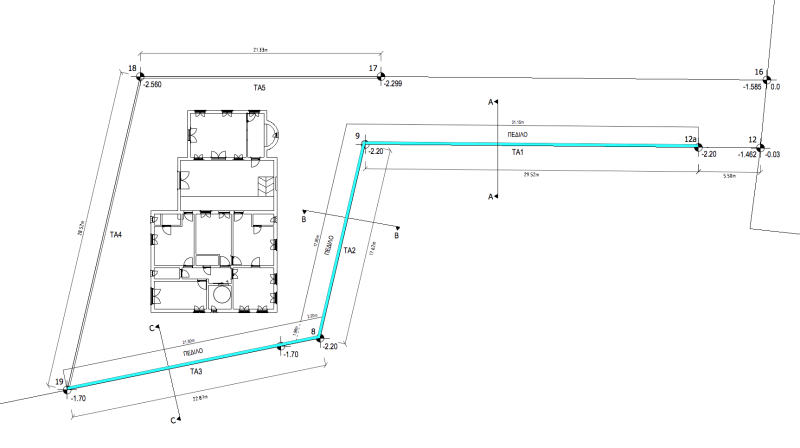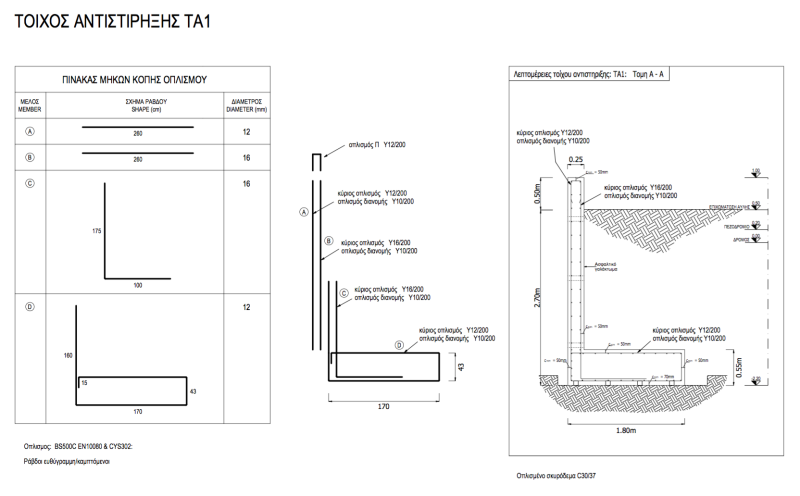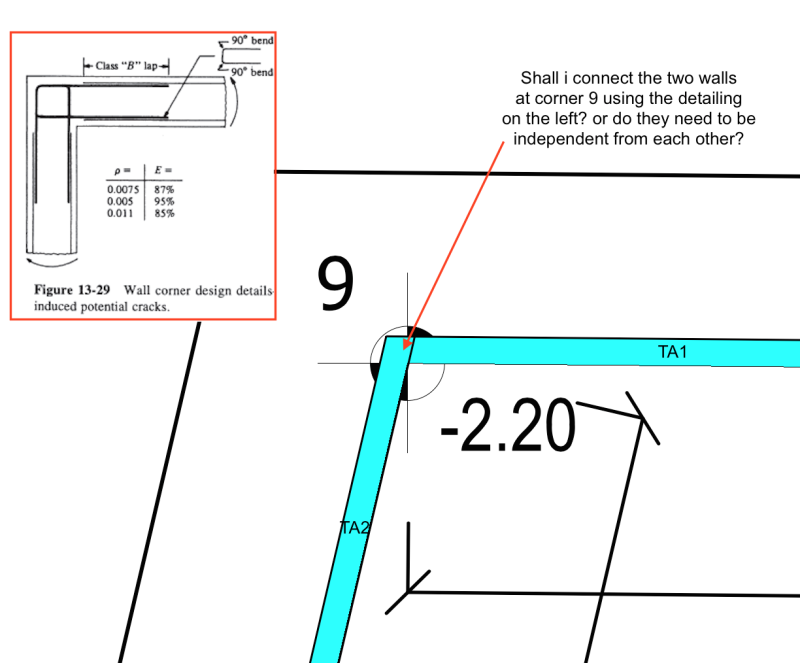kellez
Civil/Environmental
- Nov 5, 2011
- 276
Hello everyone, i am designing a reinforced concrete retaining wall (please see details on the drawings below)
and i would like to know what type of expansion joints do i need to use on the stem and at what spacing?
1) My main question now is, is it necessary to divide the wall into different sections along its
length by stopping the distribution bars and installing an OSB board together with an insulation board?
(see picture below: picture doesnt show the OSB and insulation board but shows that the distribution bars are discontinued)

2) or is it ok to just create a v-groove shape along the full height of the stem wall, by fixing one long plastic piece inside the formwork?
in addition you could also cut every other distribution bar at this location to weaken the stem at this location and promote the cracking there
3) and the last option is to cast the wall normally and then sawcut along the full height of the stem, in addition you could also cut
every other distribution bar at this location to weaken the stem at this location and promote the cracking there
which one is the best approach and is it possible to avoid dividing the wall into sections?
PLAN VIEW OF RETAINING WALL:
RETAINING WALL IS ILLUSTRATED WITH CYAN [highlight #729FCF]COLOUR[/highlight]
1st wall TA1 has a length of 30m
2nd wall TA2 has a length of 18m
3rd wall TA3 has a length of 23m

SECTION THROUGH WALL A-A

and i would like to know what type of expansion joints do i need to use on the stem and at what spacing?
1) My main question now is, is it necessary to divide the wall into different sections along its
length by stopping the distribution bars and installing an OSB board together with an insulation board?
(see picture below: picture doesnt show the OSB and insulation board but shows that the distribution bars are discontinued)

2) or is it ok to just create a v-groove shape along the full height of the stem wall, by fixing one long plastic piece inside the formwork?
in addition you could also cut every other distribution bar at this location to weaken the stem at this location and promote the cracking there
3) and the last option is to cast the wall normally and then sawcut along the full height of the stem, in addition you could also cut
every other distribution bar at this location to weaken the stem at this location and promote the cracking there
which one is the best approach and is it possible to avoid dividing the wall into sections?
PLAN VIEW OF RETAINING WALL:
RETAINING WALL IS ILLUSTRATED WITH CYAN [highlight #729FCF]COLOUR[/highlight]
1st wall TA1 has a length of 30m
2nd wall TA2 has a length of 18m
3rd wall TA3 has a length of 23m

SECTION THROUGH WALL A-A


